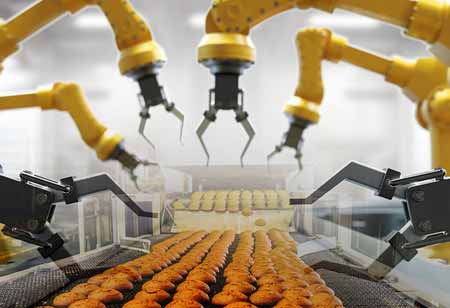THANK YOU FOR SUBSCRIBING
Be first to read the latest tech news, Industry Leader's Insights, and CIO interviews of medium and large enterprises exclusively from Food and Beverage Tech Review
Technologies Helping to Improve Food Safety Measures
Every company's biggest nightmare is a food safety incident. Employees are often busy, and a forgotten handwashing, incorrectly stored meat, or a missed line check can all lead to a foodborne illness outbreak that can quickly harm a company's

By
Food and Beverages Tech Review | Wednesday, December 15, 2021
Stay ahead of the industry with exclusive feature stories on the top companies, expert insights and the latest news delivered straight to your inbox. Subscribe today.
Food safety is critical in the food industry, not only for the sake of the consumer but also for the brand's image. Food safety technology can assist food service establishments in ensuring that food is stored, prepared, and served in a safe manner.
Fremont, CA: Every company's biggest nightmare is a food safety incident. Employees are often busy, and a forgotten handwashing, incorrectly stored meat, or a missed line check can all lead to a foodborne illness outbreak that can quickly harm a company's reputation. With one in every six Americans being ill from foodborne illnesses each year, and two-thirds of outbreaks originating in restaurants, it's vital to take food safety seriously for the sake of customers and business.
Some of the technologies that are helping to improve the food safety measures are:
Inspection apps
Internal and external audit compliance might be difficult, but it doesn't have to be a nightmare. Moving audits from spreadsheets to a platform designed to assist companies in carrying out and tracking food safety standards is one of the simplest ways to achieve this. Automatic HACCP logging, preventing employee fraud, advising corrective actions, and more are all things that food safety technologies, food safety software, or cloud-based apps may help businesses with.
Automated monitoring
Sensors in coolers, freezers, and other rooms where food is stored are increasingly becoming a must-have for many organizations. One can rapidly address the problem without having to throw out a freezer full of food if there is a food safety technology in place, such as sensors that signal authorities when the temperature climbs above safe holding temperatures. This type of continual monitoring ensures that food is safely stored in a way that manual checks cannot.
Labeling
Preventing foodborne infections requires consistent, clear labeling for prepared meals. Automated labeling can help restaurants that use a commissary or have freshly made menu items stay in compliance with regulatory standards. Automated food labeling, especially when combined with a whole restaurant management solution, relieves kitchen employees of a significant amount of work.
I agree We use cookies on this website to enhance your user experience. By clicking any link on this page you are giving your consent for us to set cookies. More info







